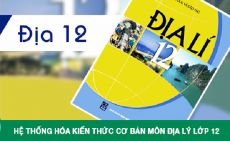Read the following passage and mark the letter A,B, C,D to indicate the correct answer to each of the questions
For formal ceremonies, men would have two additional items, a long gown with slits on either side, and a turban, usually in black or brown made of cotton or silk. In feudal times, there were strict dress codes. Ordinary people were not allowed to wear clothes with dyes rather than black, brown or white. Costumes in yellow were reserved for the King. Those in purple and red were reserved for high ranking court officials, while dresses in blue were exclusively worn by petty court officials. Men's dress has gradually changed along with social development.The traditional set of a long gown and turban gave way to more modern-looking suits, while business shirts and trousers have replaced traditional long sleeved shirts and wide trousers. Traditional costumes still exist and efforts are increasingly being made to restore traditional festivals and entertainment which incorporate traditional costumes.For women, the outer garment is a special silk gown called an “ao tu than” which is brown or light brown in colour with four slits divided equally on its lower section.The second layer is a gown in a light yellow colour and the third layer is a pink gown. When a woman wears her three gowns, she fastens the buttons on the side, and leave those on the chest unfastened so that it forms a shaped collar. This allows her to show the different colors on the upper part of the three gowns. Today, on formal occasions women wear “ao dai”.
Câu 34 : In the past, for formal ceremonies men wore ___________.
Hãy suy nghĩ và trả lời câu hỏi trước khi xem đáp án
Lời giải:
Báo saiCâu hỏi: In the past, for formal ceremonies men wore (Trong quá khứ, đối với các nghi lễ chính thức, đàn ông mặc…)
Thông tin: For formal ceremonies, men would have two additional items, a long gown with slits on either side, and a turban, usually in black or brown made of cotton or silk.
(Đối với các nghi lễ trang trọng, đàn ông sẽ có thêm hai món đồ, một chiếc áo choàng dài có khe ở hai bên và một chiếc khăn xếp, thường có màu đen hoặc nâu làm từ cotton hoặc lụa.)
In the past, for formal ceremonies men wore a long gown and a turban in black or brown
Đáp án: B
Câu 35 : The word “gown” in paragraph 1 is closest in meaning to________.
Hãy suy nghĩ và trả lời câu hỏi trước khi xem đáp án
Lời giải:
Báo saiCâu hỏi: The word “gown” in paragraph 1 is closest in meaning to
(Từ “áo choàng” trong đoạn 1 có nghĩa gần nhất với)
Thông tin: For formal ceremonies, men would have two additional items, a long gown with slits on either side, and a turban, usually in black or brown made of cotton or silk.
(Đối với các nghi lễ trang trọng, đàn ông sẽ có thêm hai món đồ, một chiếc áo choàng dài có khe ở hai bên và một chiếc khăn xếp, thường có màu đen hoặc nâu làm từ cotton hoặc lụa.)
Gown = a long dress worn on formal occasions (áo dài mặc trong những dịp trang trọng)
Đáp án: C
Câu 36 : In the past, the colour was used to represent __________.
Hãy suy nghĩ và trả lời câu hỏi trước khi xem đáp án
Lời giải:
Báo saiThông tin: In feudal times, there were strict dress codes. Ordinary people were not allowed to wear clothes with dyes rather than black, brown or white. Costumes in yellow were reserved for the King. Those in purple and red were reserved for high ranking court officials, while dresses in blue were exclusively worn by petty court officials.
(Người bình thường không được phép mặc quần áo bằng thuốc nhuộm thay vì đen, nâu hoặc trắng. Trang phục màu vàng được dành riêng cho nhà vua. Những người mặc màu tím và đỏ được dành cho các quan chức cấp cao, trong khi trang phục màu xanh lam được mặc riêng bởi các quan chức nhỏ.)
In the past, the colour was used to represent the rank in the society
(Trong quá khứ, màu sắc được sử dụng để đại diện cho cấp bậc trong xã hội)
Đáp án: A
Câu 37 : Traditional festivals _______________ .
Hãy suy nghĩ và trả lời câu hỏi trước khi xem đáp án
Lời giải:
Báo saiThông tin: For formal ceremonies, men would have two additional items, a long gown with slits on either side, and a turban, usually in black or brown made of cotton or silk
(Đối với các nghi lễ trang trọng, đàn ông sẽ có thêm hai món đồ, một chiếc áo choàng dài có khe ở hai bên và một chiếc khăn xếp, thường có màu đen hoặc nâu làm từ cotton hoặc lụa.)
Traditional festivals promote traditional costumes
(Lễ hội truyền thống quảng bá trang phục truyền thống)
Đáp án: A
Câu 38 : All of the following are true about women’s traditional costumes EXCEPT that _______.
Hãy suy nghĩ và trả lời câu hỏi trước khi xem đáp án
Lời giải:
Báo saiCâu hỏi: All of the following are true about women’s traditional costumes EXCEPT
(Tất cả những điều sau đây là đúng về trang phục truyền thống dành cho phụ nữ NGOẠI TRỪ)
Thông tin: The second layer is a pink gown. (Lớp thứ hai là áo choàng màu hồng.)
Xét đáp án B: the two inner gowns cannot be seen
(hai chiếc áo choàng bên trong không thể được nhìn thấy)
Sai với nội dung trong bài, nếu không nhìn thấy thì không thấy lớp áo thứ 2 màu hồng) => Chọn
Đáp án: B
Đề thi HK1 môn Tiếng Anh 9 năm 2022-2023
Trường THCS Đồng Khởi











